Key Points:
- Several stem and root rot diseases are evident in Nebraska soybean fields.
- Accurate diagnoses of diseases are critical for effective disease control with selection of resistant varieties.
- Some yellow spots in soybean fields are NOT caused by disease – SCOUT NOW where symptoms are evident.
Patches of yellowing or dying soybeans have been observed and are a cause of concern across many areas of Nebraska in the last two weeks. Some of these areas are due to several diseases described here, but other conditions may impact the development of these spots, such as drought conditions causing soybeans to turn quickly where there’s soil compaction or other problems. It’s important to visit these spots in the field now to closer examine symptomatic plants while they’re still visible to identify the problem, or to collect samples to submit to the UNL Plant & Pest Diagnostic Clinic for diagnosis. Accurate diagnosis is the first step to effective management and critical in these cases because resistance to some diseases won’t be effective against others.
Sudden Death Syndrome
Scattered yellow or white spots in the upper canopy of soybeans are the first signs of sudden death syndrome (SDS) typically occurring after flowering. SDS is caused by a soilborne fungus, Fusarium virguliforme, that infects roots early in the growing season. Foliar symptoms develop later in the season caused by the toxins released by the fungus. As the disease progresses, the spots on upper leaves coalesce to form brown streaks or blotches between the veins as the tissue dies (interveinal necrosis) (Figure 1). The leaves midvein and major lateral veins remain green. Premature defoliation occurs with petioles remaining on the plant as the disease reaches the more advanced stages. The progression of this disease occurs rapidly in less than 14 days, in most cases. Diseased plants have rotted taproots and lateral roots and will often pull up easily. It is important to split the stem lengthwise to observe symptoms, as SDS can be confused with brown stem rot. Discoloration inside the stem may be light gray to brown and extend up to two inches above ground, but the pith in the center of the stem remains white in SDS infected plants (Figure 2). When removing the plant from the soil, the fungus is sometimes visible on the outer root surface as masses of cobalt blue spores (Figure 3). Carefully digging plants with a shovel will help to keep the rotted roots intact for better viewing.
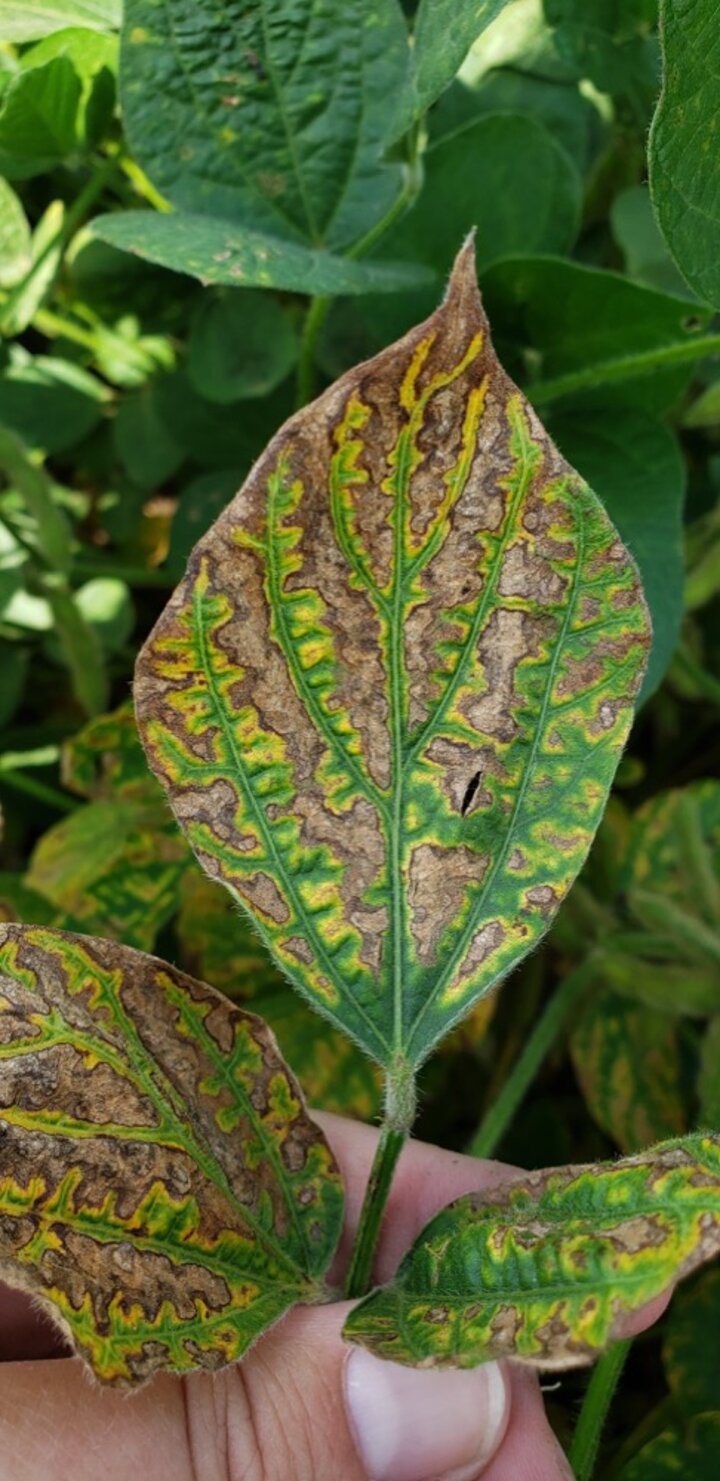
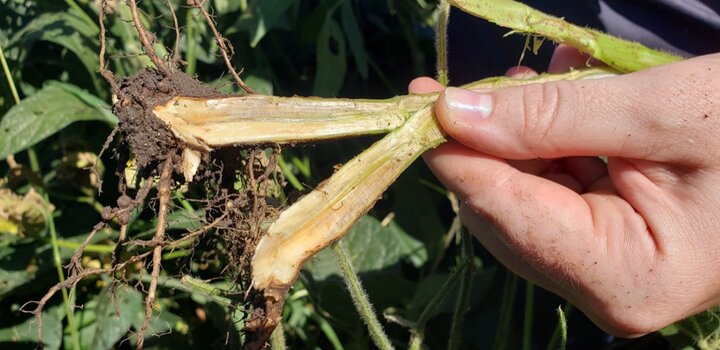

Unfortunately, no action can be taken at this time to reduce the effects of SDS on the crop. The correct diagnosis is critical, so a management strategy can be developed for the next time soybeans are grown in that field. Several soybean varieties have partial resistance to SDS reducing disease severity by up to 80% for a yield difference of up to 15 bu/A over susceptible varieties. The seed treatment Ilevo can also help reduce SDS. Managing soybean cyst nematode can also be important to help decrease the risk of developing severe SDS.
Brown Stem Rot
Brown stem rot (BSR) is caused by the fungus Cadophora gregata. This disease can cause similar foliar symptoms to SDS, interveinal scattered yellow spots (Figure 4). Those spots can coalesce to form brown streaks with yellow margins between the leaf veins as the disease progresses. Leaves can curl and die but remain attached to the stem for some time. However, leaf symptoms can vary depending on the fungal strain, soybean variety, and environmental conditions. Foliar symptoms occur early after pod set. To differentiate BSR from SDS, split the stem of infected plants lengthwise, the central pith will often be discolored brown in plants with BSR (Figure 5). Discoloration starts at the base of the stem and moves upwards to the nodes and progresses into the internodal tissues during the growing season. There may be no visible symptoms except for premature death of plants in the field and lodging.
Management for this disease is rotating to a non-host crop, such as corn, small grains, or a forage legume, and selecting soybean varieties with resistance.
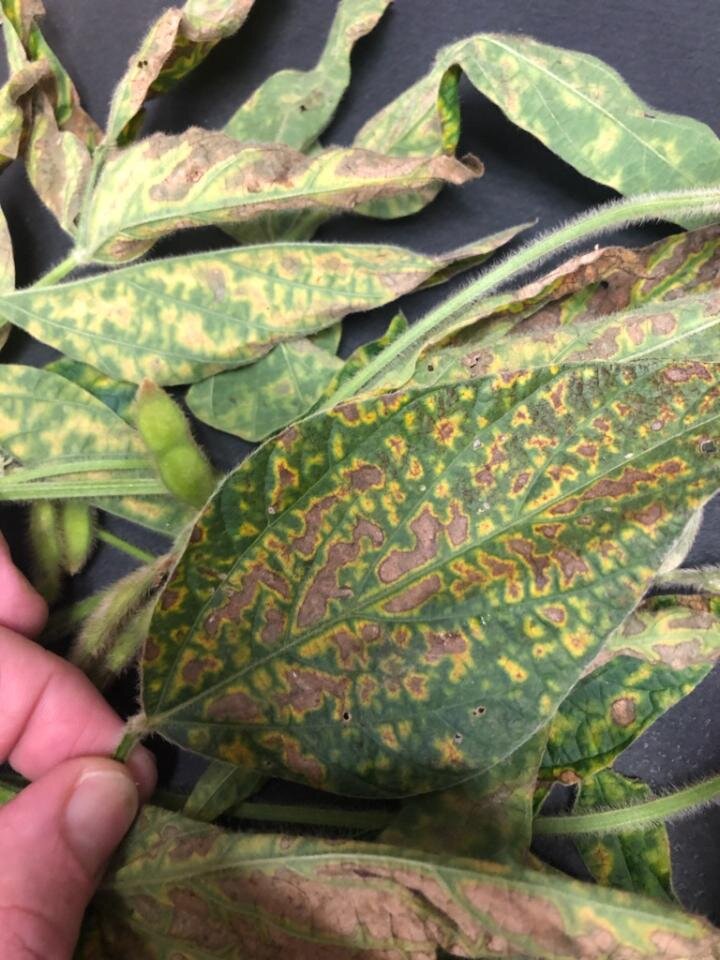
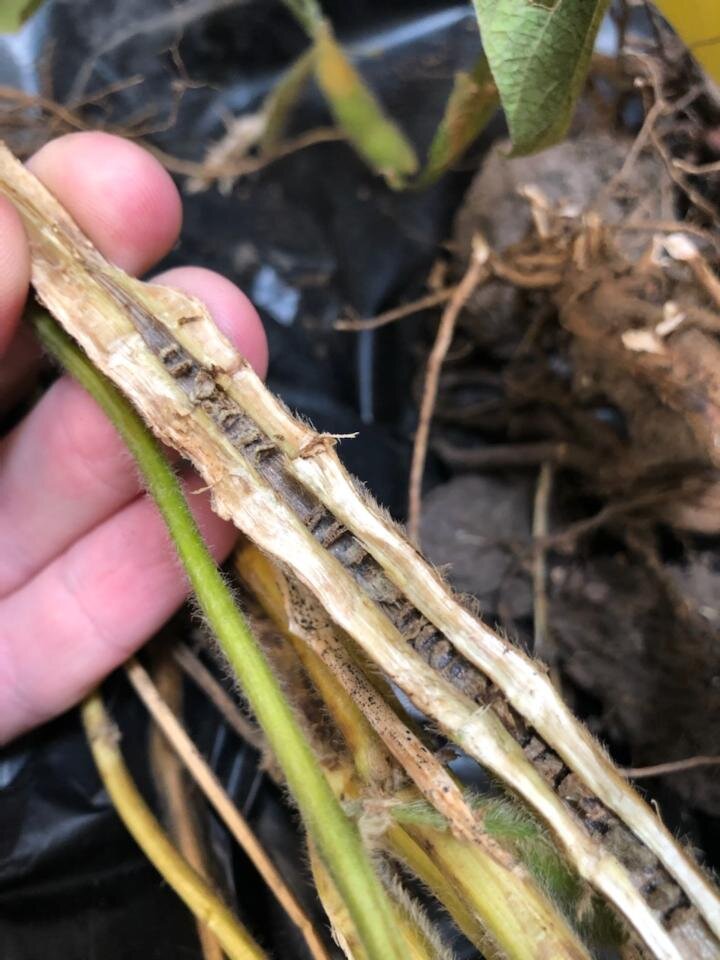
White Mold
White mold has been confirmed in soybean fields in several counties again this year in Nebraska. White mold, or Sclerotinia stem rot, is a fungal disease that can be identified now by individual or small pockets of dead or dying plants within the field. Symptoms initially appear after flowering with the leaves turning gray-green between the major veins. The leaves eventually turn completely brown and die but remain attached to the stem. White cottony fungal growth (Figure 6) can be seen on stems of infected plants and produces, black structures (sclerotia) that look similar to rodent droppings and are used for overwintering. Infected stems appear bleached and white compared to the normal tan color of mature soybean plants. Sclerotia of the fungus can oftentimes be found inside dead stems when split lengthwise. Sclerotia can also form within the cottony, white mycelial growth on leaves, stems, or pods and fall to the ground during harvest where they survive in the soil for several years.
Management with foliar fungicides requires application during bloom at R1, or less often at R3 because the fungal spores infect senescing flowers. Management strategies of this disease may also include planting soybean varieties with some resistance. Growing non-host crops for at least two or three years may help reduce overwintering of the pathogen and subsequent disease. Otherwise, increasing air movement in the canopy can reduce white mold development, such as with the use of wider rows or reduced planting populations.
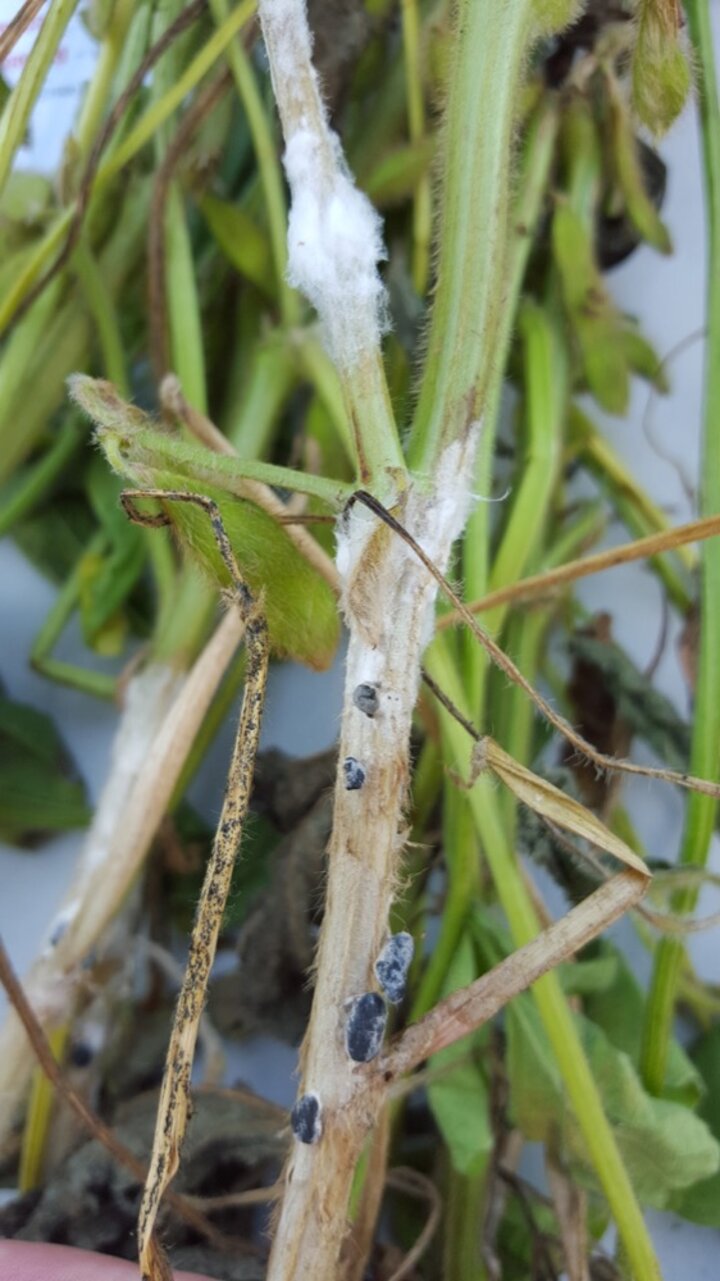
Sample Submission
Submit samples of whole soybean plants in plastic bags to the UNL Plant and Pest Diagnostic Clinic (PPDC) for help identifying these and other diseases if you are unsure of the diagnosis. It is important to know which disease is in your soybean fields to select effective disease-resistant varieties. Information on how to submit a sample and the sample submission form are available on the PPDC site.
